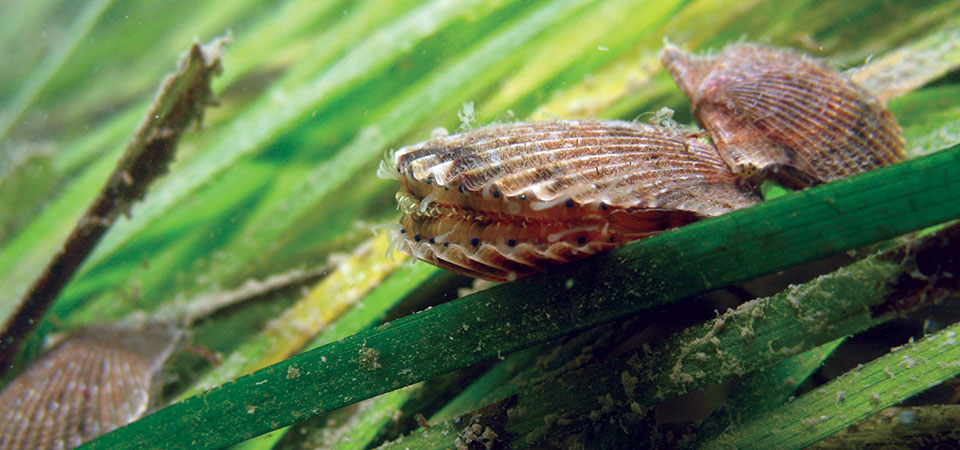The Rebirth of a Healthy Eelgrass Meadow
Innovative restoration project has created thousands of acres of prime habitat for fish, crabs, and bay scallops.

Eelgrass and Scallops Abound!
An effort to restore eelgrass beds along Virginia's Eastern Shore began in 2000 with a few seeds from the York River. Today, these seagrass meadows have grown to 6,195 acres—providing a home for an estimated 200,000 bay scallops reared in a hatchery. Image credit: Bob Orth, Virginia Institute of Marine Science
The largest and most successful eelgrass restoration project on the planet is now growing in the very place where, since the 1930s, eelgrass had been uprooted by successive hurricanes and destroyed by disease. Located on the Atlantic side of Virginia's Eastern Shore, the project's innovative methods—supported by the Virginia Coastal Zone Management Program—are rapidly expanding eelgrass in the region and restoring habitat using methods that may be effective in other regions around the world.
Seagrass beds not only improve coastal water quality by absorbing nutrients and trapping fine sediments but they also provide critical habitat for commercially important juvenile fish and crabs while absorbing large quantities of carbon dioxide from the air.
The Virginia Institute of Marine Science invented a new approach for harvesting and distributing seeds. The team located prime areas for scattering seeds, and in a relatively short time began seeing tremendous results. Since 2000, more than 71 million seeds have been distributed on 498 acres. Those seeds have grown into plants that have spread to cover over 6,195 acres.
The state's coastal program also worked with the institute and others to reintroduce bay scallops into the seagrass beds. Over 200,000 bay scallops have been reared to maturity and the wild population is estimated at over 78,000 in 2017.
Read More
Did you know?
The concept of coastal zone management is a relatively new one, emerging about four decades ago from the need to tackle an array of interconnected problems associated with population growth and development along our nation's coasts.
